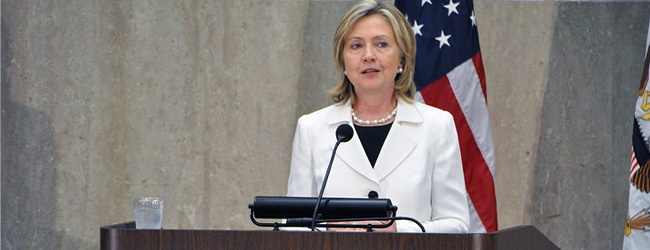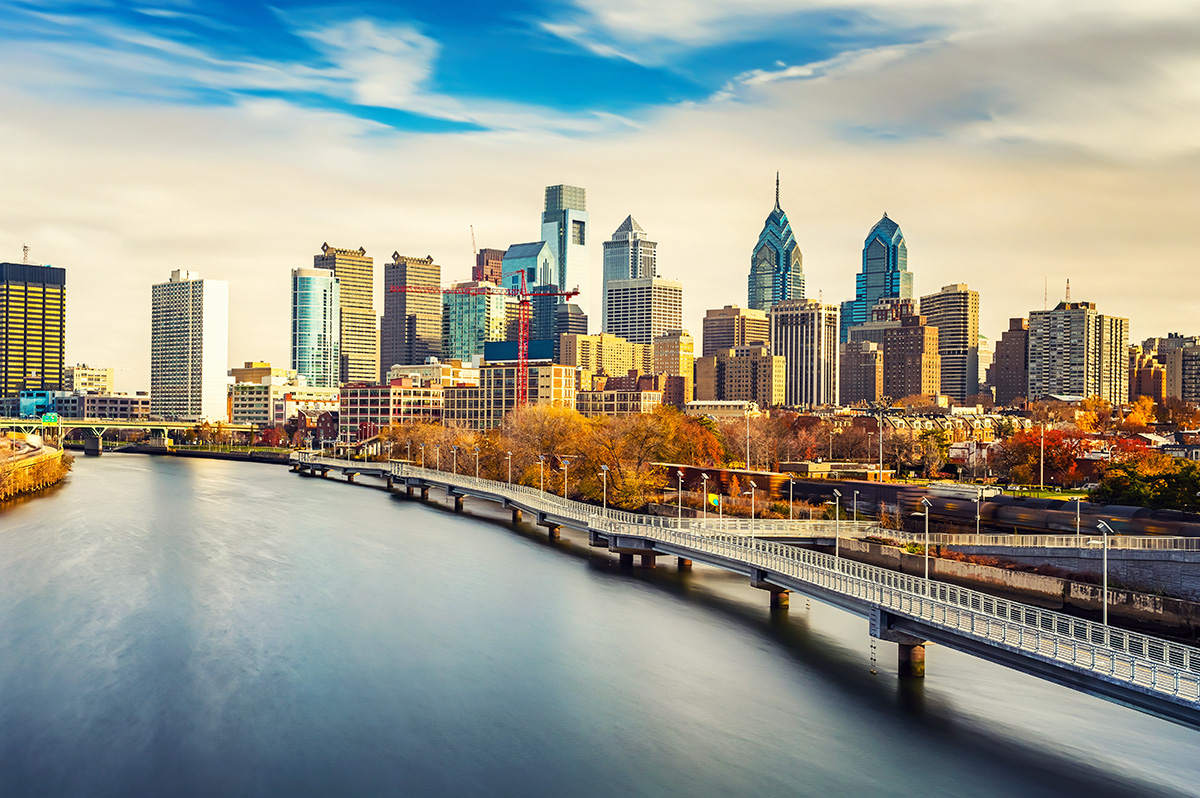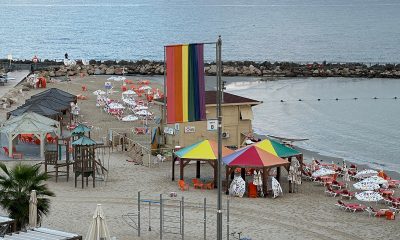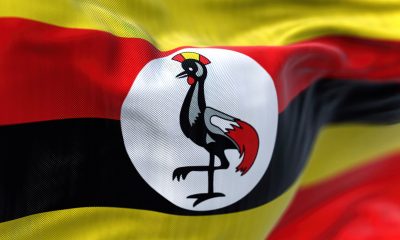Living
State Department identifies LGBT abuses overseas
Report details findings from 194 countries

The U.S. State Department published its annual report on Friday evaluating the state of human rights overseas and revealing that LGBT abuses continue to persist in many places abroad.
Introducing the findings in a media appearance Friday, Secretary of State Hillary Clinton said the report “usually generates a great deal of interest” among those following human rights and said she hopes the new report will do so again this year.
“Societies flourish when they address human rights problems instead of suppressing them,” Clinton said. “And we hope that this report will give comfort to the activists, will shine a spotlight on the abuses, and convince those in government that there are other and better ways.”
The report details the status of human rights in 194 countries over the course of 2010 and marks the 35th year in which the State Department has produced the findings, which are required by congressional mandate.
Clinton drew particular attention to the report’s identification of abuses against LGBT people overseas and said monitoring this activity is a part of the mission for the State Department.
“Because I believe, and our government believes, that gay rights are human rights, we remain extremely concerned about state-sanctioned homophobia,” Clinton said.
In addition to unveiling the report, Clinton also announced the launch of a new State Department website: humanrights.gov. The site is set to assemble reports, statements and other updates from around the world and is intended to become a depository of global human rights information.
Mark Bromley, chair of the Council for Global Equality, commended the State Department for publishing the findings and said the LGBT reporting “continues to be robust.”
“The introduction to the report cites an escalation of violence, persecution and discrimination against LGBT persons as one of three alarming human rights trends in the world last year,” Bromley said. “They note that this also translates into a denial of economic opportunity for many LGBT individuals.”
Bromley added the report demonstrates Clinton has made LGBT rights one of the State Department’s top priorities and said he looks forward to this continued U.S. engagement.
“That is due to the secretary’s leadership, but also to the many committed human rights officers in the State Department and in U.S. embassies around the world who are now actually meeting and interacting with LGBT human rights activists on a regular basis,” Bromley said.
The State Department details the condition of LGBT people in the countries examined in the report under the heading “Societal Abuses, Discrimination, and Acts of Violence Based on Sexual Orientation and Gender Identity.”
Among the abuses against LGBT people that the State Department identifies take place in countries where hostility based on sexual orientation and gender identity is well known or has been previously reported by media outlets.
In Uganda, where homosexual acts are already illegal, legislation was pending that would have instituted the death penalty for gays, although the bill reportedly has been shelved. Still, the State Department finds continued discrimination and a lack of legal protections for LGBT people.
“LGBT persons were subject to societal harassment, discrimination, intimidation, and threats to their well-being during the year,” the report states. “Individuals openly threatened members of the LGBT community and their constitutional rights during several public events.”
For example, the report cites a march that Pastor Martin Ssempa led in April against homosexuality in which participants openly threatened LGBT people.
Additionally, the State Department notes that in October a local tabloid published the names, pictures, and, in some cases, places of residence of LGBT activists under the headline “Hang Them.” According to the report, the Uganda High Court on Nov. 1 issued an injunction blocking the tabloid from publishing further information on homosexuality until the resolution of pending litigation filed by LGBT activists.
The State Department also finds continued abuses against LGBT people in Iran, where the punishment for homosexual acts is death.
The report states the country censored all materials related to LGBT issues and the Special Protection Division, a volunteer unit of the judiciary, monitored and reported “moral crimes.”
“In some cases security forces raided houses and monitored Internet sites for information on LGBT individuals,” the report states. “Those accused of sodomy often faced summary trials, and evidentiary standards were not always met.”
According the State Department, gays in Iran are sometimes “pressured” to participate in reassignment surgery “to avoid legal and social persecutions in the country.” Conditions for transgender people in Iran are seen as more favorable than they are to gays — although transgender people still face hostility.
According to the State Department, police in April found a 24-year-old transgender woman known as Mahsa strangled in her apartment. Her two brothers confessed to killing her on moral grounds.
“Although the brothers were sentenced to prison time of eight years and three years, respectively, the sentences included suspended jail time, which reduced their actual sentence in prison to three years and one year, respectively,” the report states.
The report also finds abuses against LGBT people in countries where hostility toward the LGBT community is less reported.
For example, in Honduras, the State Department says that no discriminatory law exists based on sexual orientation, but “social discrimination against persons from sexual minority communities was widespread.”
“Representatives of NGOs focusing on sexual diversity rights asserted that throughout the year security forces killed and abused their members,” the report states. “The prosecutor often encountered serious difficulties in investigating suspicious deaths of LGBT persons because the victims had concealed their identity or sexual orientation.”
Still, the report states that LGBT people in Honduras have successfully organized demonstrations against discrimination in the country. Among the events was a demonstration in Tegucigalpa to raise awareness about homophobia and a government-authorized Pride celebration at San Pedro Sula. It was not known if the police provided sufficient protection for participants at these events.
The report also identifies human rights abuses against LGBT people in places where the rights of LGBT people are sometimes seen as higher than they in the United States — such as in Western Europe, where many countries allow same-sex marriage and nationwide relationship recognition is available to LGBT people.
In the United Kingdom, for example, the report finds LGBT people enjoy protections against human rights abuses and notes that the nation’s law prohibits discrimination and harassment based on sexual orientation.
The report finds that dozens of Pride celebrations took place with no interference by the authorities and local police forces are more actively aware of bias-motivated crimes against LGBT people.
“The law encourages judges to impose a greater sentence in assault cases where the victim’s sexual orientation is a motive for the hostility, and many local police forces demonstrated an increasing awareness of the problem and trained officers to identify and moderate these attacks,” the report states.
But the report notes that LGBT people in the United Kingdom aren’t completely free from human rights abuses. The State Department cites an increase in the number of forced marriages of LGBT teenagers and a recent report stating that foreign gays seeking asylum experience “significant disadvantages” because of sexual orientation.
“[NGO] Stonewall claimed that, by ‘fast tracking’ these more complex cases and denying them quickly, UKBA staff did not give applicants time to talk openly about their sexual orientation,” the State Department states.
Real Estate
No Rose, your interest rate has nothing to do with how many likes you got on Hinge
Many factors help determine rates these days

Picture it, you’re sitting in the lunchroom at work, and your coworker just bought a house. Another coworker bought one a few months ago and you hear that she got a totally different interest rate than the other one did, even though they both bought houses not that far from each other. Homebuyers everywhere have been wondering what interest rates they are going to get, lately. It’s easy to read an article online or see an ad on social media stating specific numbers, but there may be more than meets the eye going into a particular buyer’s interest rate.
What are the factors that can affect the interest rate a buyer eventually “locks in”?
- Property details – certain properties may be in neighborhoods with higher rates of foreclosure, or there may be specific census tracts that allow a buyer to participate in the “Fannie Mae Home Ready” and “Freddie Mac Home Possible” programs, which carry more flexible requirements such as various income limits and lower interest rates, to help people begin homeownership.
- Type of loan / loan amount– a conventional, conforming loan or a jumbo loan can have differing interest rates, as well as FHA loans.
- Credit score – most people are aware that this affects what interest rate is quoted, just like on a credit card. Some lenders will work with you on ways to improve a credit score if the goal is to buy six, nine, or 12 months from now.
- Lock period – do you want to lock in the rate for 30 days? 45? Market volatility can cause the rates to change so it will cost more money to hold onto a particular interest rate.
- Loan to value ratio – one can still buy a home with less than 20% down, but the rate that is quoted may be higher.
- Occupancy type – is this the primary residence or an investment property?
- Points bought or credits taken – A buyer can pay the lender a fee to buy down the interest rate, or the seller can sometimes offer a credit. This has become more popular in recent years.
- Market conditions – keep an eye on the news – as we are all aware, change is the only constant!
Lender Tina del Casale with Atlantic Union Bank says, “With jumbo fixed rates in the low 6’s, and first-time buyer down payment assistance loans such as DC Open Doors, rates are in the mid 7’s. With the added factors of your income, the address you are purchasing and your credit score factoring into the equation, interest rates are different from buyer to buyer these days. So, skip the online tools and make a few calls because that’s the only way to get an accurate quote these days!”
It might feel like an overwhelming amount of information to take on, but remember, there are people that help others take these big steps every day. A trusted lender and Realtor can guide their clients from start to finish when it comes to purchasing a home. And for that, you’ll be saying, “thank you for being a friend!”
Joseph Hudson is a referral agent with Metro Referrals. Reach him at 703-587-0597 or [email protected].
Advice
Stop haranguing your husband about how you think he should behave
Make your point and then move on from the argument

Michael,
My husband is great, but he’s a pushover. It happens at work a lot. For example: His colleague, who came back from maternity leave about four months ago, is always leaving early. And Jeremy is always staying late to finish the jobs that they should be doing together.
But the most galling to me is that he doesn’t speak up for himself in his family. His parents (in my opinion) overtly favor his brother (who is straight) and his brother’s family. I could give a lot of examples. The latest: They’re treating the brother and the family to a cruise.
We’ve been together for 15 years, married for 12, and never get any such treatment.
Jeremy says his brother is strapped for cash (four kids, one income) and the family needs a break, whereas Jeremy doesn’t need his parents to pay for his (or our) vacation. I don’t really want to go on a cruise but it’s the principle of the thing.
Again, this is just one example. I feel bad for Jeremy being walked on, over and over, and I want him to start standing up for himself. Despite my repeated entreaties, he won’t.
When I push him on this, he tells me I’m not seeing the whole picture, or he sees it differently, or it’s not a big deal, or he’s fine with things as they are.
I can’t see how he could be fine with being taken advantage of, or not being appreciated. I think he’d have a much better life if he actually set some boundaries with people.
How do I persuade Jeremy to listen to me and be more assertive?
Michael replies:
Do you see the irony in complaining that you can’t get your husband to listen to you about being more assertive and setting a boundary?
You’ve made your point to Jeremy, repeatedly, and Jeremy is telling you to back off. In other words, he’s assertively setting a boundary with you.
You can’t get someone else to behave in the way you want, even when you’re certain that your way is best. Jeremy gets to decide how he wants to conduct himself.
Here’s a pattern I have noticed over and over again through my years of working with couples: When you try to do something for someone that is their own job to do, both you and the person you are trying to “help” wind up being resentful. You get annoyed that the other person won’t listen to your wonderful advice, and the other person gets annoyed because they don’t want someone else telling them what to do or how to live their life.
In this case, you’re trying to get Jeremy to stand up for himself more than he does, and he’s not interested in changing how he operates.
A great rule for relationships: You can advocate for what you want, but you have to let go of the result. (And advocate sparingly, or you risk being a nag).
You are continuing to argue the same point to Jeremy, and Jeremy isn’t interested in listening to you. As you asked for my advice, here it is: Cut it out before he gets into the resentment stage, if he’s not already there, as you apparently are.
Also, please consider that your repeatedly criticizing Jeremy’s parents where Jeremy sees no problem could damage not only your relationship with Jeremy, but also his and your relationship with his family.
We get to marry the person we marry. We don’t get to insist that they upgrade to a better (at least in our opinion) version. Trying to do so is not just disrespectful and a waste of time, it poisons the relationship.
So find a way to live with Jeremy as he is, or — if you find his acquiescent nature unbearable — leave. But don’t spend the rest of your marriage, or even another day, haranguing him about how you think he should behave.
Michael Radkowsky, Psy.D. is a licensed psychologist who works with couples and individuals in D.C. He can be found online at michaelradkowsky.com. All identifying information has been changed for reasons of confidentiality. Have a question? Send it to [email protected].
Real Estate
The best U.S. cities for LGBTQ homebuyers in 2025
Where strong equality scores, vibrant culture, attainable prices converge

Buying a home has always been a landmark of security and self-expression. For LGBTQ+ people, it can also be a powerful act of claiming space in a country where housing equality is still a work in progress. The good news? This year offers more options—and more protections—than ever. A record-breaking 130 U.S. cities now score a perfect 100 on the Human Rights Campaign’s Municipal Equality Index (MEI), meaning their local laws, services, and political leadership actively protect queer residents, reports.hrc.org. Meanwhile, national housing analysts at Zillow expect only modest price growth this year (about 2.6 percent), giving buyers a little breathing room to shop around.
Below are eight standout markets where strong equality scores, vibrant LGBTQ+ culture, and relatively attainable prices converge. Median sale prices are from March 2025 Zillow data.
1. Minneapolis–St. Paul, MN
Median sale price: $317,500
Twin Cities residents benefit from statewide nondiscrimination laws that explicitly cover sexual orientation and gender identity, a thriving queer arts scene, and dozens of neighborhood Pride celebrations beyond the mega-festival each June. Buyers also appreciate Minnesota’s down-payment assistance programs for first-time and BIPOC purchasers—many LGBTQ+ households qualify.
2. Philadelphia
Median sale price: $227,667
Philly combines East Coast culture with Mid-Atlantic affordability. “Gayborhood” anchors like Giovanni’s Room bookstore mingle with new LGBTQ-owned cafés in Fishtown and South Philly. Pennsylvania added statewide housing protections in 2024, closing the legal gaps that once worried trans and nonbinary buyers.
3. Pittsburgh
Median sale price: $221,667
Don’t let the steel-town stereotype fool you—Pittsburgh’s MEI score is 100, and its real-estate dollar stretches further than in comparable metros. Lawrenceville and Bloomfield have become hubs for queer-owned eateries and co-working spaces, while regional employers in tech and healthcare boast top Corporate Equality Index ratings.
4. Tucson, Ariz.
Median sale price: $328,333
This desert city punches above its weight in LGBTQ+ visibility thanks to the University of Arizona, a nationally ranked Pride parade, and some of the country’s most picturesque outdoor recreation. Arizona’s statewide fair-housing statute now explicitly lists gender identity, giving buyers added recourse if discrimination occurs.
5. Madison, Wisc.
Median sale price: $413,867
Madison blends progressive politics with a top-five public university and a booming tech corridor. Local lenders routinely promote inclusive marketing, and Dane County offers one of the few county-level LGBTQ+ home-ownership programs in the nation, providing up to $10,000 in forgivable assistance for low-to-moderate-income couples.
6. Atlanta
Median sale price: $359,967
The cultural capital of the Southeast delivers queer nightlife, Fortune 500 jobs, and a web of supportive nonprofits such as Lost-n-Found Youth. While Georgia lacks statewide protections, Atlanta’s 100-point MEI score covers public accommodations, contracting, and employer requirements—shielding homebuyers who choose in-town neighborhoods like Midtown or East Point.
7. St. Petersburg, Fla.
Median sale price: $354,667 Yes, Florida’s statewide politics are turbulent, but St. Pete has long held firm on LGBTQ+ equality. The city’s Pride festival draws nearly a million visitors, and local ordinances bar discrimination in housing and public services. Waterfront bungalows in Kenwood and more affordable condos near Uptown give first-time buyers options.
8. Denver
Median sale price: $563,500
Colorado passed some of the nation’s strongest gender identity housing protections in 2024, and Denver’s queer community remains one of the most visible in the Mountain West. Although prices run higher, buyers gain exceptional job growth and one of the country’s largest Gay & Lesbian Chambers of Commerce.
Smart Strategies for LGBTQ+ Buyers & Sellers
1. Build Your Dream Team Early
- Work with an equality-focused real-estate pro. The easiest way is to start at GayRealEstate.com, which has screened gay, lesbian, and allied agents in every U.S. market for more than 30 years.
- Choose inclusive lenders and inspectors. Ask whether each vendor follows HUD’s 2021 guidance interpreting the Fair Housing Act to cover sexual orientation and gender identity.
2. Know Your Rights—And Limitations
- Federal law bars housing bias, but enforcement can lag. Document everything and report issues to HUD, your state civil-rights agency, or Lambda Legal.
- In states without full protections, rely on city ordinances (check the MEI) and add explicit nondiscrimination language to your purchase contract.
3. Evaluate Neighborhood Fit
- Use local data: crime stats, school ratings, transit, and MEI scores of nearby suburbs.
- Spend time in queer-owned cafés, bars, and community centers to gauge true inclusivity.
4. For Sellers: Market With Pride—And Professionalism
- Highlight proximity to LGBTQ+ resources (community centers, Pride festivals) in your listing remarks.
- Stage neutrally but inclusively—rainbow art is great, but removing personal photos can protect privacy during showings.
The landscape for LGBTQ+ homeowners is evolving fast. By coupling inclusive laws, supportive culture, and attainable prices, cities like Minneapolis, Philadelphia, and Tucson stand out for 2025. No matter where you land, surround yourself with professionals who value every part of your identity. Start your journey at GayRealEstate.com, lean on the resources above, and claim your corner of the American dream—on your own terms, and with pride.
Scott Helms is president and owner of Gayrealestate.com.
-

 U.S. Supreme Court16 hours ago
U.S. Supreme Court16 hours agoSupreme Court upholds ban on transgender care for minors
-

 Books5 days ago
Books5 days agoCelebrate Pride month by reading these books
-

 Opinions5 days ago
Opinions5 days agoFaith leaders celebrate WorldPride at interfaith service
-

 Real Estate5 days ago
Real Estate5 days agoNo Rose, your interest rate has nothing to do with how many likes you got on Hinge













